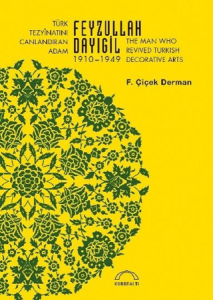
SUR, KEMER, KUBBE Osmanlı Fotoğrafçılarının Gözüyle Bizans İstanbulu Suna ve İnan Kıraç Vakfı'nın bugün sayıları 4500'lere ulaşan 'Eski İstanbul Fotoğrafları Koleksiyonu', Sur, Kemer, Kubbe adıyla, XIX. yüzyılın ikinci yarısının biraz solmuş, sararmış fotoğrafları aracılığıyla, İstanbul'daki Bizans anıtlarının dünü bugünü üstüne ilginç saptamalar yapmamıza ve aradan geçen zamanın yol açtığı değişimleri değerlendirmemize olanak veriyor.
WALL, ARCH, DOME Byzantine Istanbul In The Eyes Of Ottoman Photographers Revealed hundred-year old images from the Rumeli shores of the Bosphorus through the eyes of the 19th century Ottoman photographers, Suna and İnan Kıraç Foundation is opening an exhibition by means of its 'Old Istanbul Photographs Collection' including nearly 4.500 photographs today.
Wall, Arch and Dome allows us to make interesting and insightful observations on Byzntine monuments of Istanbul in the slightly faded and weathered photographs from the second half of the 19th century. Through these images, we are able to follow the traces of change over time.
SUR, KEMER, KUBBE Osmanlı Fotoğrafçılarının Gözüyle Bizans İstanbulu Suna ve İnan Kıraç Vakfı'nın bugün sayıları 4500'lere ulaşan 'Eski İstanbul Fotoğrafları Koleksiyonu', Sur, Kemer, Kubbe adıyla, XIX. yüzyılın ikinci yarısının biraz solmuş, sararmış fotoğrafları aracılığıyla, İstanbul'daki Bizans anıtlarının dünü bugünü üstüne ilginç saptamalar yapmamıza ve aradan geçen zamanın yol açtığı değişimleri değerlendirmemize olanak veriyor.
WALL, ARCH, DOME Byzantine Istanbul In The Eyes Of Ottoman Photographers Revealed hundred-year old images from the Rumeli shores of the Bosphorus through the eyes of the 19th century Ottoman photographers, Suna and İnan Kıraç Foundation is opening an exhibition by means of its 'Old Istanbul Photographs Collection' including nearly 4.500 photographs today.
Wall, Arch and Dome allows us to make interesting and insightful observations on Byzntine monuments of Istanbul in the slightly faded and weathered photographs from the second half of the 19th century. Through these images, we are able to follow the traces of change over time.




















